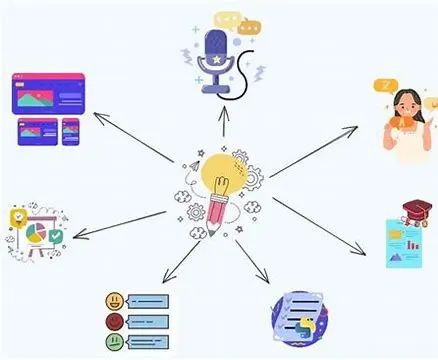
In today’s digital age, artificial intelligence (AI) has deeply integrated into every aspect of our lives—from intelligent writing assistants to language translation software, from content generation tools to smart customer service systems. The presence of AI is everywhere. However, with the surge of AI-generated content, a new issue has gradually surfaced—what we call the “AI flavor.” This unique “flavor” allows many sharp readers and users to easily identify whether a piece of text was created by AI. In many situations, this overly noticeable AI trace can affect the quality, credibility, and emotional resonance of the content with its audience. Fortunately, there are methods and “one-click universal formulas” that can help us effectively remove the AI flavor, reducing it from as high as 90% to nearly imperceptible levels at 0%.
I. Characteristics of the AI Flavor
Before diving into ways to remove the AI flavor, we first need to clearly understand what specific features define it. Texts generated by AI often exhibit some distinct characteristics:
- Excessively Smooth and Structured Language: AI adheres strictly to grammatical rules and common linguistic patterns, producing texts that are almost flawless in terms of grammar. However, this perfection sometimes appears unnatural, lacking the occasional grammatical errors, colloquial expressions, or unique linguistic habits found in human writing. The result is a mechanical and rigid tone.
- Unusually Clear Logical Structure: AI organizes content within a predetermined logical framework. It typically introduces a problem, lists viewpoints and evidence sequentially, and concludes smoothly, following a predictable pattern. In contrast, real-life human thinking is not always so linear or neat. Human expression may involve jumps, flashbacks, or sudden bursts of inspiration, whereas AI-generated content tends to feel formulaic and rigid.
- Lack of Vocabulary Personalization: AI leans toward using common, generic words to ensure accuracy and universality. This results in texts lacking unique, novel vocabulary or creative word combinations, making them appear bland and forgettable.
- Shallow and Hollow Emotional Expression: Although AI can simulate the use of emotional vocabulary, it often fails to convey the depth and subtleties of human emotions. Emotional expressions may come off as superficial, lacking genuine sentiment. Readers find it hard to feel the warmth or emotional fluctuations behind the words.
II. Key Elements of the “One-Click Universal Formula”
To eliminate the AI flavor, the following key elements form our “one-click universal formula”:
- Increase Personalized Expression: Encourage authors to incorporate their unique language style, vocabulary preferences, and rhetorical devices. For instance, using dialectal words, original metaphors, or personal catchphrases can inject life into the text, setting it apart from the cookie-cutter AI style. A writer from Sichuan might describe a lively scene with “闹热得很” (a regional phrase for “very lively”) instead of the standard “热闹非凡,” infusing the text with local flavor and personal character.
- Introduce Logical Variations: Break the overly structured logic typical of AI. Add side information, unexpected twists, or leaps in thought. For example, when discussing a viewpoint, start with an unrelated story or personal experience before transitioning to the main topic. This makes the article’s logic closer to natural human thinking, enhancing readability and interest. When writing about environmental protection, one could begin with childhood memories of playing by a clear stream, then contrast that with the polluted state of rivers today, leading into the importance of environmental conservation. Such narrative detours are more engaging than simply listing data and measures.
- Enrich Emotional Layers: Go beyond merely using emotional vocabulary; delve into the reasons and details behind the emotions to make readers empathize. For instance, instead of saying “I am sad,” describe how sadness manifests: “Tears welled up in my eyes, my throat felt choked, and my heart was gripped by an invisible hand. The pain spread throughout my body, leaving me gasping for breath. Memories flooded back, intensifying my sorrow.” Such detailed descriptions make emotions richer and more authentic.
- Focus on Detailed Descriptions: Use rich details to flesh out the content, allowing readers to visualize vivid scenes in their minds. Whether describing characters, environments, or events, the more detailed the description, the more realistic and credible the text becomes. For example, instead of simply stating “This is an ancient town,” describe it thus: “The cobblestone streets, worn smooth by time, glimmered with a weathered patina. The wooden houses lining the street exuded an aged scent, while red lanterns hanging under eaves swayed gently in the breeze. Occasionally, a lazy cat lounged at a doorway, watching passersby through half-closed eyes. Moss on the corners of walls grew greener in the drizzle, whispering tales of the town’s long history.” These details bring the town to life far more effectively than a generic statement.
III. Specific Steps for Implementation
Based on the key elements above, here are some practical steps to apply the “one-click universal formula” to actual text revision:
- Personalized Rewriting After Initial Draft: If using AI-generated drafts, read through the entire text to identify overly generic or bland sentences and replace them with unique expressions. For critical points, incorporate personal experiences or insights. For example, rewrite “Technological advancements have brought convenience to people’s lives” as “In my city, the wonders of technology are everywhere. Take commuting, for instance. What used to be a long, congested commute is now effortless thanks to shared bikes and smart traffic systems. Technology is like a magical key unlocking the door to a convenient lifestyle.”
- Adjust Logical Structure: Review the overall logic of the article. Check for overly rigid paragraph arrangements and argument sequences. Try rearranging sections to create suspense or progression. For instance, instead of presenting success factors in a straightforward manner, begin with a real-life story of an ordinary person achieving success. Then extract lessons from the story and delve into broader discussions about success. Such variations better capture reader attention.
- Inject Emotional Details: When describing events, characters, or opinions, consciously add emotional elements and detailed descriptions. For product reviews, don’t just list features and specs; share your personal experience. For example: “When I first opened this phone, its exquisite design immediately caught my eye. Holding it felt luxurious, instantly boosting my affection for it. Its smooth operation during use delighted me—every swipe and tap felt like默契 interaction with a trusted companion. Such joy cannot be fully conveyed by cold numbers.”
- Enhance Detail Descriptions: Carefully review descriptive content and elaborate on parts that can be further detailed. For example, instead of simply saying “He wore a shirt and jeans,” expand it: “He wore a faded blue shirt, collar slightly open to reveal tanned skin. The sleeves were casually rolled up, paired with deep-blue jeans bearing signs of wear around the knees. On his feet were dusty black sneakers, as if he’d just returned from an energetic outdoor adventure.” Such detailed depictions make characters more vivid and lifelike.
IV. Examples Demonstrating Application
Let’s explore examples to illustrate how to apply the “one-click universal formula” to remove the AI flavor.
Example 1: Story Creation
Original AI-Generated Story:
“In a distant kingdom, there was a brave knight who heard that monsters were invading the borders. He embarked on a journey to defend the land. Along the way, he defeated many small monsters and eventually faced the monster king in a fierce battle. After much struggle, he triumphed, saving the kingdom and becoming a hero beloved by all.”
Optimized Version:
“Imagine you are the knight living in this fantastical kingdom filled with towering castles, vast forests, and mysterious lands hidden behind misty mountains. Clad in gleaming armor and riding a majestic black stallion whose mane flows freely in the wind, you hear of monstrous invasions wreaking havoc near the border. Driven by duty, you set forth on a perilous quest. Battling through dark forests where gnarled branches grasp at you like skeletal hands, enduring wounds from thorny bushes, you press forward undeterred. Each encounter with grotesque creatures tests your courage, yet your swordsmanship prevails. Finally reaching the monster king’s lair—a shadowy cave reeking of decay—you face a colossal beast with scales harder than steel. Bloodied but resolute, you strike the fatal blow, roaring in victory. Upon returning, the townsfolk greet you with cheers, children gazing in awe. You stand proud, knowing you’ve safeguarded peace for generations to come.”
Example 2: Argumentative Writing
Original AI-Generated Essay Excerpt:
“Social media negatively impacts teenagers by distracting them, affecting academic performance, spreading misinformation, and causing addiction. Therefore, its usage should be restricted.”
Optimized Version:
“Have you noticed how social media invisibly ensnares teenagers? Watching students sneak peeks at their phones during class reveals a troubling trend. Social media fragments attention spans, turning once-diligent learners into distracted wanderers. Consider Xiao Ming, whose grades plummeted after succumbing to endless scrolling. Instead of solving math problems, he binge-watched short videos late into the night. Beyond distraction, misinformation proliferates unchecked, distorting values and eroding trust in truth. Prolonged exposure harms mental health, fostering anxiety and isolation. Limiting social media isn’t oppression—it’s protection. Like building fences near cliffs, it shields young minds from falling prey to digital pitfalls. Let’s guide teens toward mindful tech use, prioritizing real-world growth over virtual escapism.”
V. Continuous Optimization and Practice
Removing the AI flavor isn’t instantaneous—it requires practice and refinement. Incorporate the “one-click universal formula” into daily writing tasks, whether crafting reports, essays, or personal creations. Read widely across genres to absorb diverse styles and techniques. Seek feedback from others to identify lingering AI traces and refine accordingly. By mastering these principles, we can elevate our texts, ensuring they resonate emotionally and intellectually, standing out amidst the sea of AI-generated mediocrity.
Reproduction without permission is prohibited:AI LAB » One-click universal formula to remove the AI flavor, reducing it from 90% to 0%.

